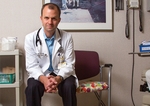profession
Med school enrollment not growing as quickly as projected
■ Meanwhile, first-year residency positions are increasing at less than 1% annually, a new AAMC survey says.
By Christine S. Moyer — Posted May 28, 2010
- WITH THIS STORY:
- » Related content
The Assn. of American Medical Colleges said first-year allopathic medical school enrollment will not increase by 30% by 2015, as the association had hoped.
The AAMC recommended increasing enrollment to boost the number of first-year medical students from 16,488 in 2002 to 21,434 by 2015. But the goal is not expected to be reached until 2018.
However, combined first-year enrollment at allopathic and osteopathic medical schools is expected to rise 36% above 2002 figures by 2015. That would mean nearly 27,000 total first-year spots for the 2014-15 academic year.
Edward Salsberg, director of the AAMC's Center for Workforce Studies, said AAMC officials are encouraged that first-year enrollment is growing, even if it's not as fast as previously projected.
"There was a slight slow-up [in enrollment growth], which we think really reflects the impact of the recession on medical school enrollment. But the long-term trend continues to be positive," he said.
There is some concern by educators and others that available residency positions are not keeping pace with enrollment. First-year residency slots are increasing at less than 1% a year, according to the AAMC's 2009 medical school enrollment survey, released May 10 (link).
At this rate of growth, the AAMC survey said, available residencies "will not be sufficient to meet the expected increase in demand and need for physician services."
There are about 27,000 residency positions in the U.S. About 16,500 allopathic medical students and 3,500 osteopathic medical students are graduating this year, Salsberg said. In addition, about 7,000 international medical school graduates vie for residency spots each year.
"I'm pretty comfortable that U.S. medical school graduates will have the greatest opportunities for residency training. But it's going to get competitive ... particularly for the most sought-after residency positions in specialties like dermatology and orthopedic surgery," Salsberg said.
The AAMC survey found the number of U.S. allopathic medical schools has increased from 125 in 2002 to 132 in 2010. Of the 126 schools that responded to the survey, 62 reported instituting or considering initiatives to encourage primary care.
The AAMC projects that by 2025, the nation could face a shortage of up to 159,000 physicians (including 46,000 primary care doctors) due in part to the increasing population and longer life expectancy.












